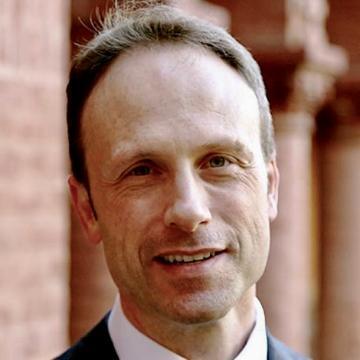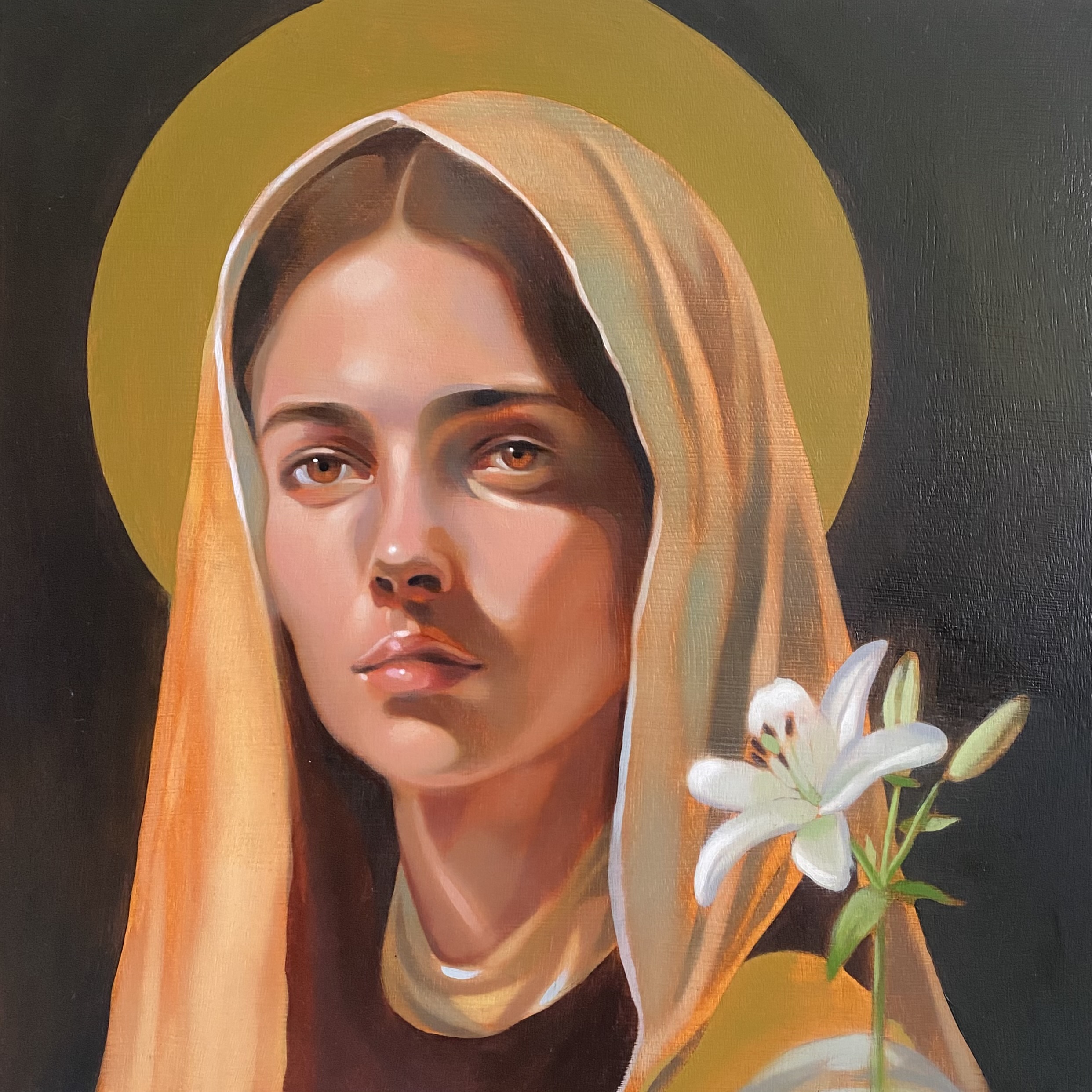
Practice Confronting Theory

By Brian Buckley
Senior Lecturer
Department of Philosophy
In the past year, our group read a series of articles about various aspects of Catholic social teaching (CST) and the Catholic intellectual tradition (CIT). The content of the many pieces ranged from issues of race, gender, and the environment to the role of a Catholic university in a modern context. Despite the differing topics, styles, and aims in the pieces, there were a few overarching themes that I could discern. Of these, the most important, I believe, was the tension between theory and practice.
My field is philosophy and I teach in the areas of ethics, politics, law, and ancient through medieval history of philosophy. The first three, since the time of Aristotle, have been known as practical philosophy, and they are set against theoretical philosophy. The practical are those disciplines and emphases that are put into action, that take their end in action. So, a legal theory or ethical theory or political theory that is never seriously enacted is not practical; it is only theoretical. The point of any theory in practical philosophy is clear—it is to effect change through legislation, personal choices, or governance.
In teaching this material, I also emphasize the essential nature of procedure in philosophy—that it is just as important how we proceed in our reading, discussion, and engagement of ideas as the content of the ideas themselves. When approaching a certain course, I ask myself what I would like students to remember from that course—one, five, or even 10 years in the future. And while I would love for them to know Aristotle’s examples of the ethical mean or Aquinas’ bases for natural law or Cicero’s reasons for supporting virtue and the common good in a republic, I do not have illusions that students will remember them. What I do think is always reasonable, however, is for students to have learned a way of reasoning and reflecting. I often quote the Japanese poet Basho in this regard: “We seek not to follow in the footsteps of the old masters; we seek what they sought.” So, if years in the future, a student can be as careful as Kant in her reasoning or as common sensical as Aristotle or as synthetic and open as Aquinas, then I believe my class will be worth a small portion of her undergraduate time and effort. Michael Buckley, a Jesuit philosopher and theologian, gives this open procedure an essential role in the Catholic university. In his chapter “The Catholic University as Pluralistic Forum,” he asserts, “Discussion is the formalizing activity of the university, and the refusal to discuss is the destruction of its life. Each time a professor will not discuss with students, or students with one another, or professor with professor—something of the university dies.”
It is with these professional emphases on theory informing practice and philosophical procedure that I read the CIT readings this year. Notably, from them I gained a great deal of knowledge and inspiration about practice challenging theory. What I mean by that is that in fields where practice is expected, and certainly CST numbers among them, under-applied theory will not be acceptable. It will be questioned openly. In such cases where theory argues or preaches in one direction and current practice on race, poverty, hierarchy, or moral theology in general does not match it, then theory must be directly challenged so that it truly informs practice. In a way, it must be reanimated to be meaningful. It must be confronted with a practice out of conformity with it. Since ancient times, there has been a particular distaste for those people who present one face to the world, then act differently. Such persons or institutions are “duplicitous” or “double” rather than whole, “integrated,” and acting with “integrity.” A person or institution with integrity is the same in public and private, in today’s dealings and tomorrow’s. They do not argue for or support one thing but then do another. They do not preach that others must perform in accord with important standards while then excusing themselves from those same principles. I believe this is what Pope Benedict meant in his social encyclical Caritas in Veritate (Love in Truth) when he said pointedly: “While the poor of the world continue knocking on the doors of the rich, the world of affluence runs the risk of no longer hearing those knocks, on account of a conscience that can no longer distinguish what is human. God reveals man to himself; reason and faith work hand in hand to demonstrate to us what is good, provided we want to see it; the natural law, in which creative Reason shines forth, reveals our greatness, but also our wretchedness insofar as we fail to recognize the call to moral truth” (emphases mine).
CIT is quite clear in its emphasis on practice in Church institutions and persons. To be Catholic in name means also to be Catholic in practice. The two are inseparable and whole. Theory means practice. Truth means action. In “Catholicity: Its Scope and Contents”—a chapter in John Haughey’s Where is Knowledge Going?—he reminds us of the Church’s history with wholeness. “The word catholicity etymologically promises a worldview that is universal ... The word connotes movement toward a universality or wholeness.” There is a broad perspective celebrated in catholicity that argues against a confining and defining particularism. In its universality, the Church is meant to embrace a wholeness that does not exclude. While “universal” and “whole” have different meanings and connotations, taken together, they point toward a complete human integration. The Church is not for some. It is not for a certain time. Its universal breadth is meant to capture its inclusivity and its equality and therefore its justice.
Since the time of Aristotle, equality and justice have been joined. When two persons are considered morally and politically equal, then treating them differently is unjust. It is to deprive them of their due as equals. Because of this, a Church that is meant to be universal and whole should reasonably be seen as one intimately connected with the equal treatment through justice. This justice links with the dignity mentioned in the Compendium of the Social Doctrine of the Church. “A just society can become a reality only when it is based on the respect of the transcendent dignity of the human person. The person represents the ultimate end of society, by which it is ordered to the person ...” Equal dignity invokes justice and justice is about action. So, the Church that has a moral theology or intellectual tradition that does not comport with its practice then undermines the ideal of being whole and universal. Without justice for all, some are treated differently, rather than in accord with a universal wholeness where none are treated differently. Justice therefore challenges the Church in terms of those on the margins who often are ignored—as not having a place at the table meant for all.

Andrew Johnson, A Pondering Heart, 2023.
In a society that has been historically unjust, arguably no group in the United States has been further marginalized than our fellow Black citizens. The Church in America has recognized this problem, with the bishops issuing the pastoral letters “Brothers and Sisters to Us” in 1979 and “Open Wide Our Hearts” in 2018. In the former, the bishops proclaimed, with great clarity, “[L]et the Church proclaim to all that the sin of racism defiles the image of God and degrades the sacred dignity of humankind which has been revealed by the mystery of the Incarnation.” And in the latter, “All of us are in need of personal, ongoing conversion. Our churches and our civic and social institutions are in need of ongoing reform.” This moral theology, however, does not always comport with practice in Catholic institutions. M. Shawn Copeland notes that this is particularly true with regard to white privilege and the constant refusal by so many to reconsider their easy positions concerning such issues as color blindness. In “The Intersection of Race, Class, and Gender in Jesuit and Feminist Education,” she reminds us that too often race is purposefully deemphasized and subtle aspects of racism “pass unnoticed. Thus racism as power, as structuring hierarchy, is erased and reduced to the actions of a few unsavory bigots whom some people of color are forced to endure.” The liberation of Catholic institutions from racist and other marginalizing effects must then be sought by centering race and considering openly how institutional practices normalize white advantages. To do anything else means that practice fails to conform with the moral principles the bishops stated so clearly in both pastor letters. It would be to fail Black Americans in ways articulated clearly by Bryan Massingale in Racial Justice and the Catholic Church: “The abstract and ‘hypothetical’ speculation all too characteristic of standard Western accounts of justice is simply inadequate to the task of sustaining—or even giving an adequate account of—this community’s historic and passionate account of its realization.”
As Fr. Buckley reminded us, the university is the perfect place for embracing the openness Copeland and Massingale articulate. It is the role of a Catholic institution to provoke students to discover biases and otherwise reflect on given presuppositions that may prevent practice from matching with theory. Done well, this procedure is what a philosophy
class achieves as it turns its students toward wonder. Bertrand Russell holds that this is a particular benefit from studying philosophy. He tells us in The Value of Philosophy that philosophy is liberating and anti-dogmatic because of its ties to open wonder. “Philosophy, though unable to tell us with certainty what is the true answer to the doubts which it raises, is able to suggest many possibilities which enlarge our thoughts and free us from the tyranny of custom. Thus, while diminishing our feeling of certainty as to what things are, it greatly increases our knowledge as to what they may be; it removes the somewhat arrogant dogmatism of those who have never travelled into the region of liberating doubt, and it keeps alive our sense of wonder by showing familiar things in an unfamiliar aspect.”
A Catholic social tradition that prides itself on the connections between faith and reason must allow the latter to mean practical reason. When the individual working in a Church institution makes decisions on behalf of students, employees, and the wider community, she must be open not only to hearing new ideas, but to allowing those ideas to provoke her into addressing potential disharmonies between what is said and what his done, what is preached and what is practiced, what is advertised and what in fact occurs, and what is held to be valued and what actually is rewarded. In a way then, if CIT is to be a living tradition that allows for growth, it must be open so that practice may confront theory. Procedurally, it must endeavor to make people non-complaisant and ever ready to revisit lack of conformity between beneficial goals and ideals and everyday practice.
Over the years, I often reflect on one of the best, most discomfiting writings of the recent Church. In 2005, Pope Benedict XVI decided to write his first encyclical, Deus Caritas Est, on love. In it, he said that it was not enough to go through the motions to love one’s neighbor. More fundamentally, it meant seeing them as a person. In his words, I see not only the overall emphasis in CST concerning equal human dignity, but a reminder to reflect openly, whether our practice is always in conformity with the theories of love the Church preaches throughout its social teachings. “Then I learn to look on this other person not simply with my eyes and my feelings, but from the perspective of Jesus Christ. His friend is my friend. Going beyond exterior appearances, I perceive in others an interior desire for a sign of love, of concern. This I can offer them not only through the organizations intended for such purposes, accepting it perhaps as a political necessity. Seeing with the eyes of Christ, I can give to others much more than their outward necessities; I can give them the look of love which they crave.”
Brian Buckley earned three academic degrees from Jesuit universities (Seattle U., Gonzaga, and Loyola Chicago) and has taught at Santa Clara University in the philosophy department since 2007. In his time at SCU, he has also been the director of Prelaw Advising and coordinator of the College of Arts and Sciences 2016 Salon. His teaching and research focus on respect for persons, the common good, politics, the rule of law, and law.